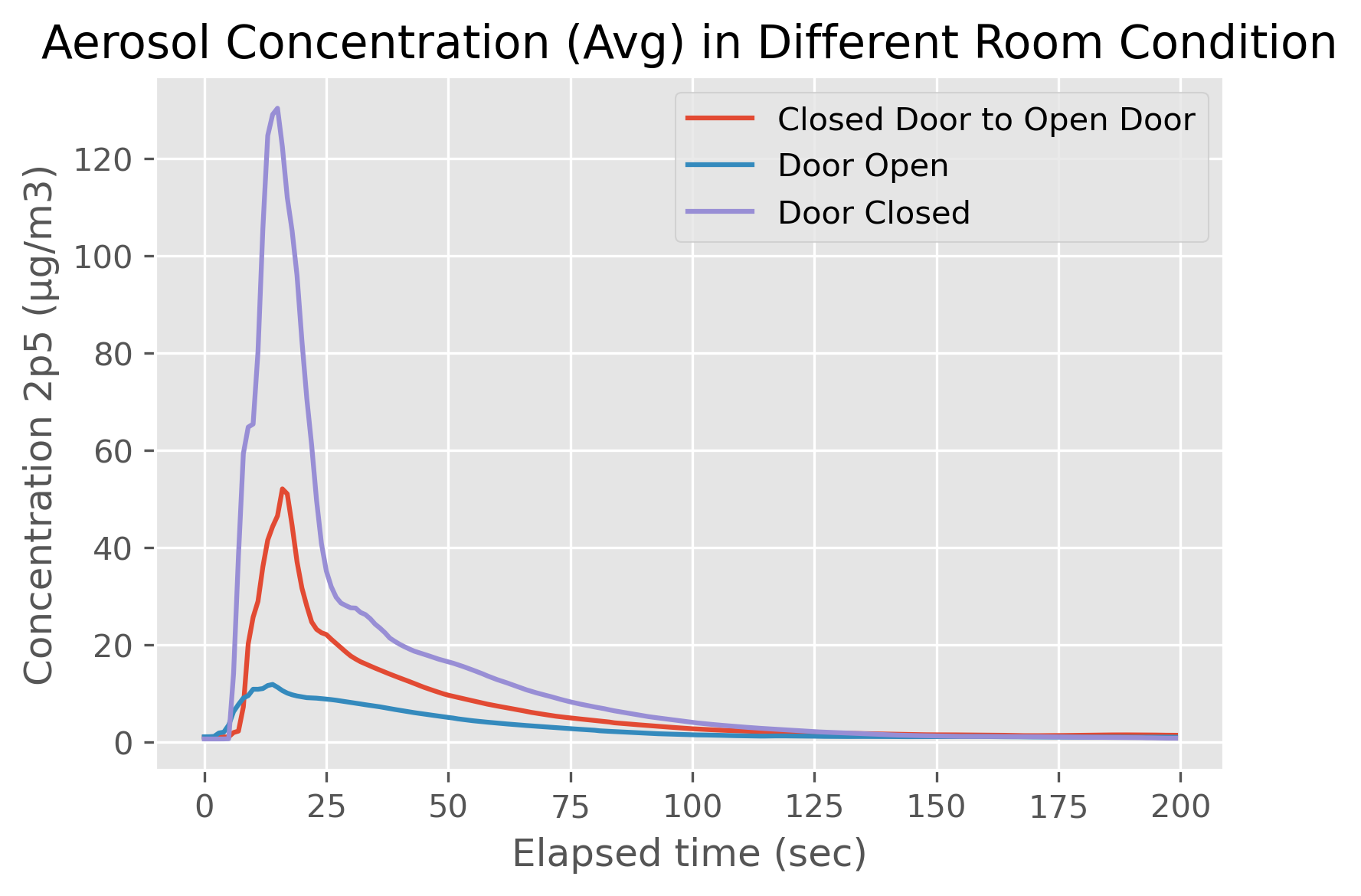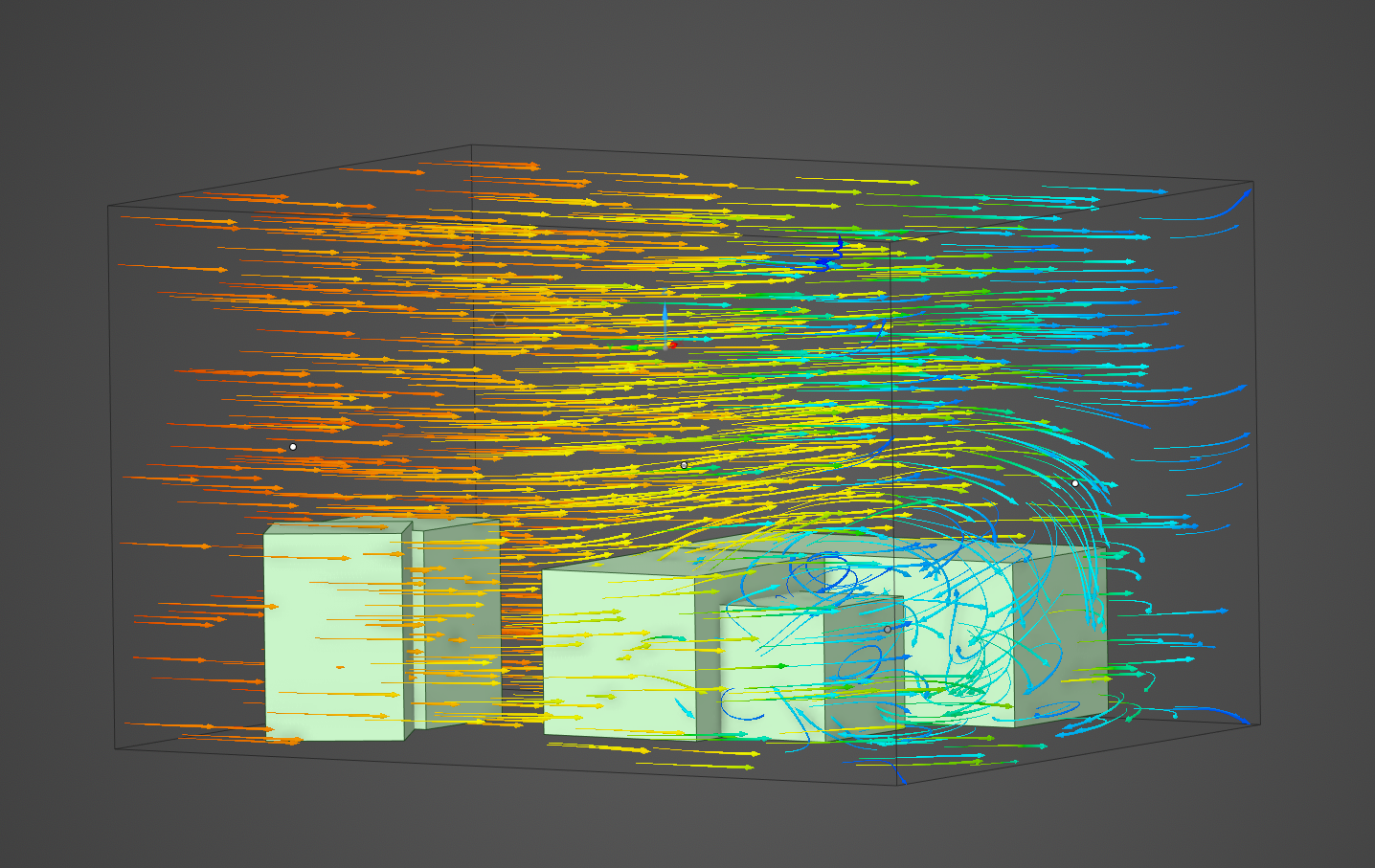Introduction
Motivation: Indoor air quality is very important when it comes to ensuring the safety and comfort of individuals in a variety of settings. However, the existing air quality monitoring systems are often costly and do not fully consider risks assoiated with respiratory droplets and aerosols. Therefore, a tool that can provide information regarding the duration of exposure to resporatory aerosols would prove to be incredibly beneficial. By utilizing such a tool, individuals and organizations would be better equipped to make informed decisions regarding the safety of indoor environments, thereby minimizing the risk of respiratory infections and promoting overall health and well-being.
Goals: In this project, we aim to develop application to monitor resident time of human respiratory aerosols in indoor environment utilizing mobile sensors and machine learning models, with the aim of improving the safety of people, especially in high-risk environment such as hospitals, healthcare facilities, and classrooms. The app will capture syndromic signal such as cough and provide dinformation to optimize safety in dynamic real world setting and use cost effective and accessible to the general public.
Methods
The project is divideed into three stages: Data collection, Data Visualization, and Modeling and Simulation.
Data Collection
Data Collection APP Development
We developed an iOS application for collection of data and proof of concept deployment of models.
Our app includes features such as:
- Audio: capture and classify audio to detect human respiratory events such as cough, sneeze
- Thermal Image: using a FLIR one camera to detect surface temperatures, and detect human presence, and movement in the thermal image using YOLO model
- Lidar and Camera: capture room layout info and geomtry required for modeling and CFD simulation
- Database: store collected data online using Firebase
 |
 |
 |
Tools for Measuring Aerosol Concentrations

|
|
Data Collection Process
|
|
|

|
|

|
|

|
|

|
|

|
|
Data visualization
Exploratory Data Analysis
Our exploratory data visualization has revealed that the dispersion and duration of aerosol concentrations at various sensor locations varies under different fan speed settings during a cough event.
|
|
|
|
|
|
To better illustrate these differences, we used a log scale graph and an aerosol concentration at exhaust location graph for comparison.


|
|
We also conducted experiments under three different room conditions.
- Leaving the door open during the cough simulation event.
- Keeping the door closed during the cough simulation event.
- The door was closed during the cough simulation event and then opened afterward.
Observation: We discovered that air flow also plays a crucial role in the changes in aerosol concentration. When the door is open, the aerosol concentration is significantly lower than when the door is closed, which suggests that the exchange of air with the surrounding environment can help to reduce the concentration of aerosols in the room. Conversely, the resident time for aerosols was longer in enclosed environments.

The following animation helps to visualize how the aerosol concentration in a room changes after a cough event.
Significance: These observations highlight the importance of considering room conditions, such as ventilation and air flow, when developing models to forecast aerosol concentration in different settings. By taking into account the influence of room conditions, we can develop more accurate models and better understand the factors affecting aerosol dispersion.
Modeling and Simulations
Compartment Model
To forecast aerosol concentration, we utilized two compartment models with one sub-compartment. We solved the equation of aerosol concentration in both the perfectly mixed parent compartment () and subcompartment () over time. However, for the sake of simplicity, we neglected the sinks (settling) factor and focused solely on the aerosol concentration in the parent compartment.
|

 |
Model Prediction
Our predictions of aerosol concentration are heavily influenced by the air exchange rate () and compartment coupling coefficient (). After researching common air exchange rates for different room settings (as listed on The Engineering Toolbox website) and conducting multiple trials and errors on the coefficient, we were able to determine the best-fit model with varying parameters under different fan speed settings.
|

aerosol concentration prediction of at low fan speed setting |
|

aerosol concentration prediction at high fan speed setting |
|

aerosol concentration prediction of at no ac setting |
Computational Fluid Dynamics Simulation
Aside from modeling, we also utilized professional simulation software to validate our data collection process, especially the locations where we should put the PM sensors. The software is Ansys Discovery, a computational fluid dynamics simulation tool that can model airflows in an enclosed space. From the figure below, it is clear that when airflow attempts to pass through the different furnitures in the room, the air is likely to be disrupted and form a vortex which can have temporarily increased aerosol concentration in the room. The simulation serves as an extra data source for us to make sure that we are doing things correctly. However, due to our limited knowledge about CFD, the simulation setting still needs some work before being able to simulate actual coughing. As of right now, the software provides us with an opportunity to examine the possible airflow conditions in the test room.

Conclusion & Discussion
For this project, we have developed models using measured sensor data and simulation data to develop robust models to predict aerosol resident time. In the future, we will continue work on compartment model and we need a better way to determine the value of alpha and the air exchange rate instead of manually tuning parameters. We will continue to improve the model’s accuracy in incorporating sound labels and subject movement.
Reference
[1] Rahman, Tauhidur. Modeling indoor Air quality and Aerosol Transport with Simulation Digital Twins, 2022. University of California, San Diego.
[2] The Engineering Toolbox. Air Change Rates in Typical Rooms and Buildings. https://www.engineeringtoolbox.com/air-change-rate-room-d_867.html
[3] A Perez, J Penaloza Gutierrez, A Tejada-Martinez - APS Division of Fluid Dynamics Meeting Abstracts, 2021. Two-compartment modeling of a hospital isolation room informed by CFD
[4] George Zhou, Garrett W. Burnett, Ronak S. Shah, Cheuk Yin Lai, Daniel Katz, and Eric A. Fried. Development of an Easily Reproducible Cough Simulator With Droplets and Aerosols for Rapidly Testing Novel Personal Protective Equipment. Simulation in Healthcare: The Journal of the Society for Simulation in Healthcare, Publish Ahead of Print, March 2022